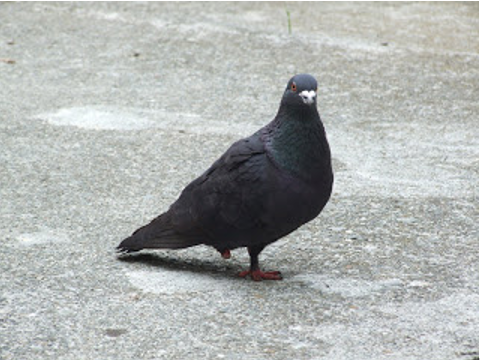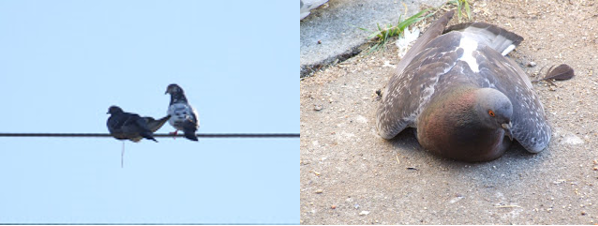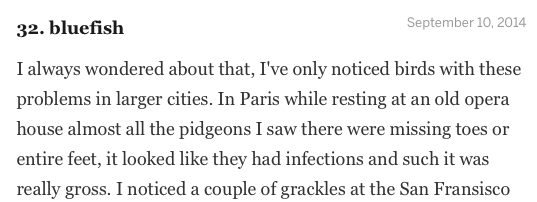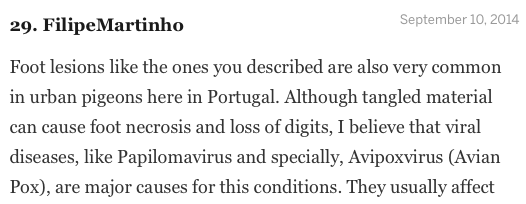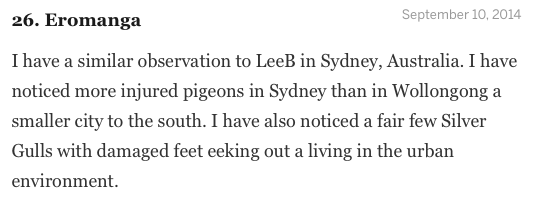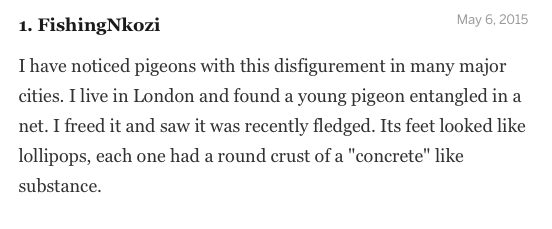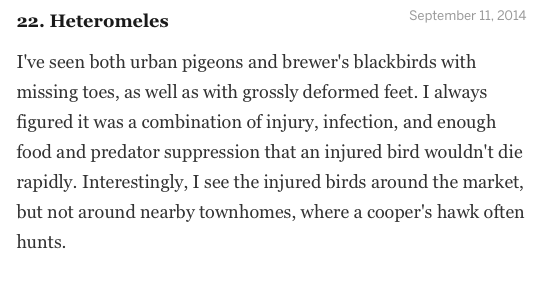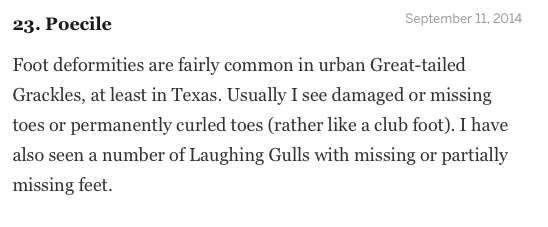Pigeon toes are disappearing and the silent culprit is human hair

Human hair on a Brisbane street. The council does not record what types of litter collect in its street sweepers.
Source: Daneka Hill
Human hair is the fishing line of the city, often responsible for the high numbers of town pigeons getting around on mangled feet.
Elizabeth Young is the founder of Palomacy, a pigeon and dove rescue service in the San Francisco Bay Area.
“They see string and hair people pull out of their brush, and wire, and they take that back to the nest. What happens is that string and hair and stuff, that is in the nest, gets tangled up around their feet and it cuts off the circulation,” said Young all the way back in 2011.
It's known as ‘stringfoot’ and is recognised by pigeon advocacy groups as one of the most common problems in the equally despised and admired bird.
The New York City Pigeon Rescue Centre has its own ‘foot squad’ who focus on untangling birds they can trap.
“Sometimes all that is holding the toe to the body is the string and in taking the string off, the toe could come off with it,” reports Fred Threadman of the ‘Foot Squad’.

A fledgling pigeons who has only just left the nest. Birds can begin their lives tangled in string litter. Source: New York City Pigeon Rescue Centre
Despite the consensus, there are still many myths on why city pigeons have bad feet.
There is even a common misconception, mainly in the United States, that leaving hair and string out in the backyard for the birds is helpful.
“OK, who hasn’t seen the suggestion to put scraps of yarn, twine, string and even human hair out for the birds during nesting time?” Wrote ourherbgarden.com in response to an advisory post by the Carolina Waterfowl Rescue Centre.
“We get in many baby songbirds every year missing limbs due to string-like materials in nests,” the Centre said after an influx of online posts recommending the unintentionally hurtful practice.

The foot of a Crested Pigeon found in Gold Coast car park. The middle toe is already dead and wrapped tightly in human hair and braid (non-flexible fishing line). Source: Wild Bird Rescues Gold Coast.
Wild Bird Rescues Gold Coast focuses on native species rather than the domestic pigeon, but still deal with the issue of ‘stringfoot’ in species such as Crested Pigeons and magpie-larks (otherwise known as Pee Wees).
“With small species the entanglement is most often cotton or human hair; both equally destructive. With larger species, maggie [magpie] size and up, the entanglement can sometimes be string or cord but mostly it’s fishing line,” President Rowley Goonan says.
In a capture report Central Surfers Paradise is identified as a place 'where pigeons are all too prone to entanglement in cotton or human hair'.
"Most pigeons lose their toes after entanglement in human hair," Goonan says.
“Their slim toes and short legs are prone to entanglement in anything that’s long and stringy. Seven centimetres of the stuff… that’s more than enough to devastate a little pigeon.”

Mangled and missing pigeon toes is a phenomena as world-wide as the birds themselves. As the world's oldest domesticated bird, every pigeon colony has one thing in common. Humans.
Click image for interactive map.
Twitter feed:



Comments feed (Scientific America):
Sources:
Brisbane City Council,
Palomacy, Elizabeth Young
New York City Pigeon Rescue Centre
ourherbgarden.com
Carolina Waterfowl Rescue Centre
Rowley Goonan (Gold Coast Wild Bird Rescue)
Brisbane Bird Vet
Melbourne Bird Vet
Scientific America
Birds in Backyards
Environment.gov.au
Sustainable Salons
Stumpy the White Pigeon






